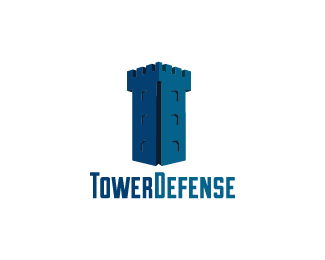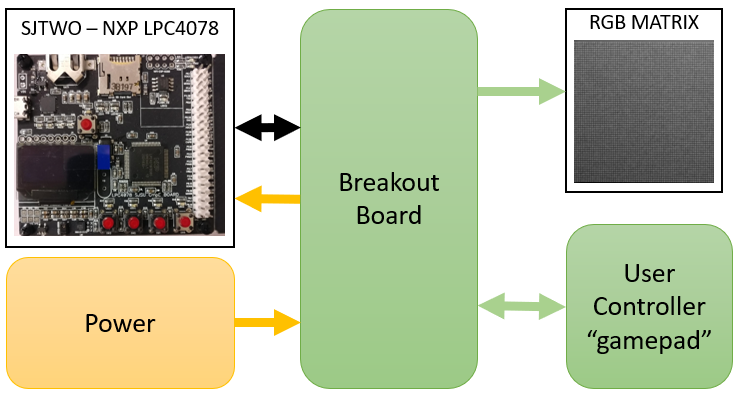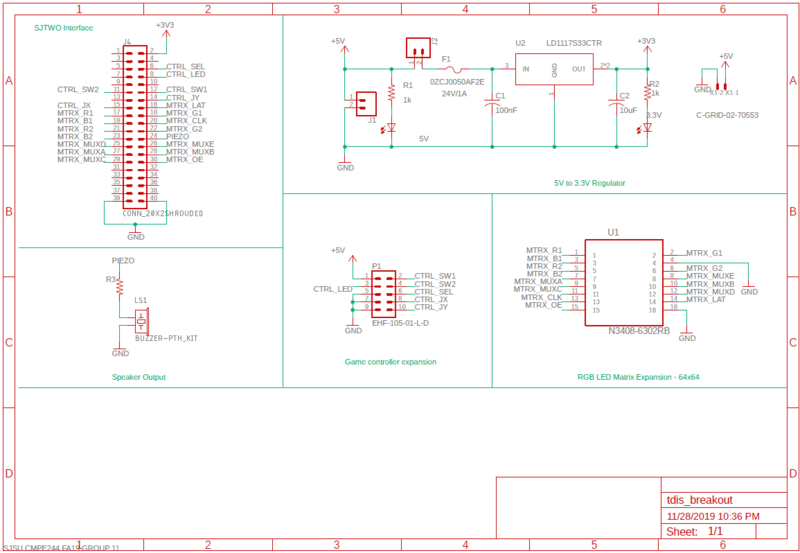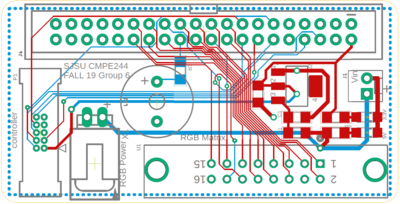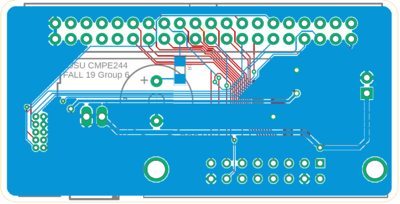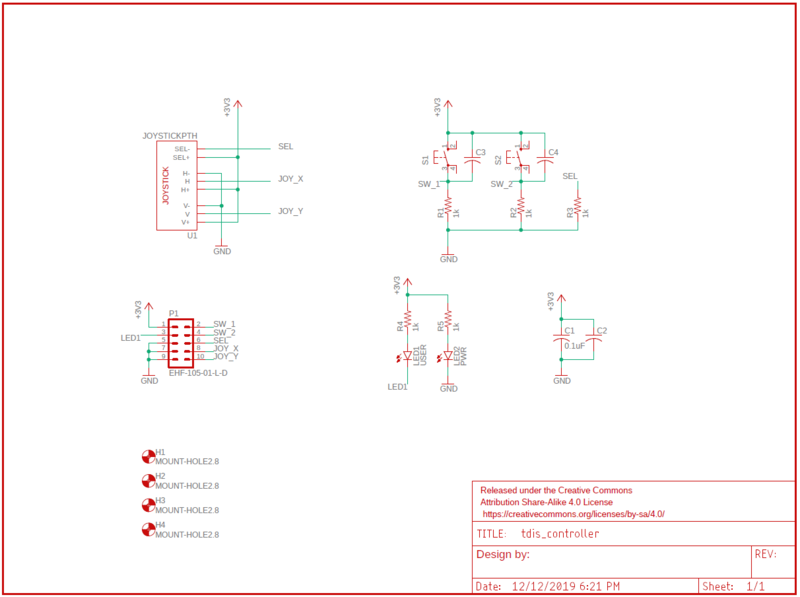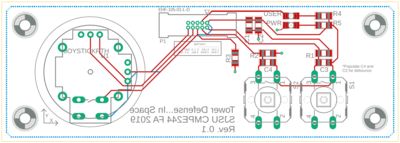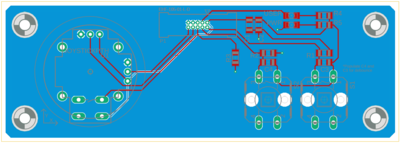F19: Tower Defense in Space
Contents
Grading Criteria
- How well is Software & Hardware Design described?
- How well can this report be used to reproduce this project?
- Code Quality
- Overall Report Quality:
- Software Block Diagrams
- Hardware Block Diagrams
- Schematic Quality
- Quality of technical challenges and solutions adopted.
Project Title
Tower Defense ... In Space
ABSTRACT
My abstract goes here.
INTRODUCTION AND OBJECTIVES
|
TEAM MEMBERS & RESPONSIBILITIES | ||||
|---|---|---|---|---|
|
Team Members |
Administrative Roles |
Technical Roles | ||
|
Team Lead |
| ||
|
Git Repo Manager |
| ||
|
Wiki Report Manager |
| ||
|
Bill of Materials Manager |
| ||
SCHEDULE
|
TEAM MEETING DATES & DELIVERABLES | ||||
|---|---|---|---|---|
|
Week# |
Date Assigned |
Deliverables |
Status | |
| 1 | 10/15/19 |
|
| |
| 2 | 10/22/19 |
|
| |
| 3 | 10/29/19 |
|
| |
| 4 | 11/5/19 |
Kelvin
|
| |
| 5 | 11/12/19 |
Kelvin
Polin
Ryan
Zach
|
| |
| 6 | 11/19/19 |
Kelvin
Polin
Ryan
Zach
|
| |
| 7 | 11/26/19 |
Kelvin
Polin
Ryan
Zach
|
| |
| 8 | 12/3/19 |
|
| |
| 9 | 12/10/19 |
|
| |
BILL OF MATERIALS (GENERAL PARTS)
|
MAJOR COMPONENTS | ||||
|---|---|---|---|---|
|
PART NAME |
PART MODEL & SOURCE |
QUANTITY |
COST PER UNIT (USD) | |
|
|
| ||
HARDWARE INTEGRATION
Hardware Design Overview
At a high level hardware integration requirements fell into two categories:
1. Reduce risk of unreliable cable connections and eliminate possibility of damage to components through unexpected disconnections, power surges, etc.
2. Provide a more fluid physical interface for the user to interact with the game via hardware
To accomplish these goals, two boards were designed: a breakout board and a gamepad controller. The breakout board serves as a connection hub between all system hardware components; power, the RGB matrix, the SJTWO board, etc. while the joystick provides a cleaner package to present the user with the games inputs. The diagram below shows the relationship between the main subsystems:
Breakout Board Design
The breakout board design requirement was to interface all external hardware components with the embedded system (SJTWO). The hardware connections are:
1. The 64x64 RGB Matrix
2. Output power to the RGB Matrix
3. User game controller (see next section)
4. Input power supply (5V)
5. The SJTWO embedded system
Gamepad Hardware Design
The gamepad board design requirement was to provide a more packaged interface for the user to interact with the game.
Design
- Balancing priorities between HW design and getting a working prototype
Assembly
- Wireless antenna connector on master board not accounted for in footprint, it may have to be removed to avoid interference with one connector.
Bill Of Materials
|
HARDWARE INTEGRATION PCB | ||||
|---|---|---|---|---|
|
PART NAME |
PART MODEL |
QUANTITY |
COST PER UNIT (USD) | |
TEST
In order
Hardware Design
During
We used
CONCLUSION
This pr
